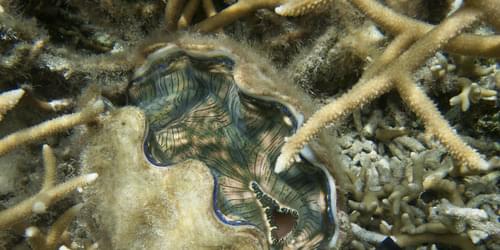A theoretical model for the illumination of photosynthesizing algae in giant clams suggests principles for high efficiency collection of sunlight.
Crops on a farm capture only about 3% of the available solar energy, much less than the 20%–25% captured by large solar arrays. Now a research team has used a theoretical model to explain efficiencies as high as 67% for photosynthesizing algae hosted by giant clams [1]. The researchers argue that clams achieve this performance with an optimized geometry. The mollusks may also adjust the algae clusters’ spacing according to changing light conditions. The researchers hope that an understanding of clams’ solar efficiency might help other scientists improve the efficiency of solar technology and explain aspects of the photosynthetic behavior of other ecosystems such as forests.
A photosynthetic cell can convert nearly every incoming photon to usable energy, says biophysicist Alison Sweeney of Yale University. But efficiency is much lower in larger systems such as agricultural fields. “Can we achieve near-perfect efficiencies over large land areas? This is an urgent question” as researchers try to reduce reliance on fossil fuels, Sweeney says.
